Eduard Kick Oberpfälzer Steingutmanufaktur
 producer/manufacturer
producer/manufacturer
Oberpfälzer Steingutmanufaktur Eduard Kick in Amberg
Amberg, Bavaria.
Porzellan- und Steingutfabrik, sowie Kaolinschlämmerei / Manufacturers of porcelain & earthenware and kaolin treatment.
Simon Hezendörfer founded a faience factory in 1759. Eduard Kick purchased 50% ownership of the factory in 1843, followed by full ownership in 1846. Kick is thought to have co-operated at some time with
Dorfner & Co. and subsequently had a commercial tie up, exchanging moulds, skills etc. After the Royal Porcelain Factory in Ludwigsburg closed in 1824, Kick purchased ninety seven of their moulds, which he used for production of both porcelain and Steingut. It is also known that Kick constructed new porcelain (high temperature) ovens in 1860. However, by 1905, they were no longer advertising porcelain as part of their product range. Kick died childless in 1880 and his brother-in-law Wenzeslaus Rasel took over the company. By 1905 his sons, Hans Rasel and Commerce Chairman Eduard W. Rasel, were running the company, however they closed the ceramics factory producing steins etc. in 1910 or 1911, due to foreign competition. The allied mining company continues to the current day.
Reference:
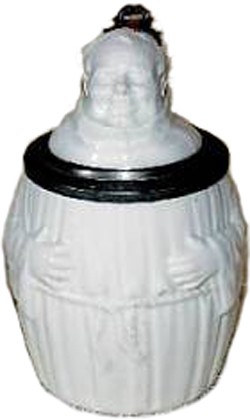
This 1/2 litre Porcelain stein is seen more often in its decorated state of brown robes and a black skull cap. It was made with a variety of lithophanes.
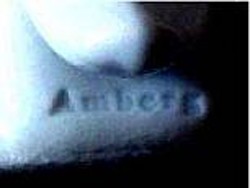
This mark beneath the handle of the above stein, is attributed to E. Kick
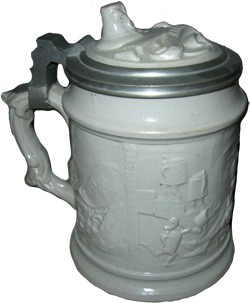
Earthenware stein by E. Kick.
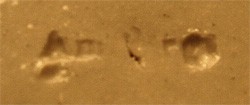
"Amberg" basemark on the above stein.
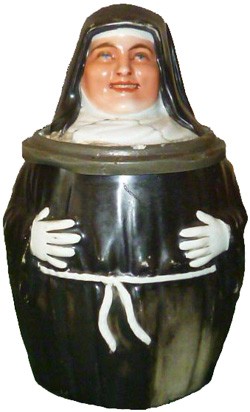
Nun stein with identical base moulding to the white Monk, but with Nun lid.
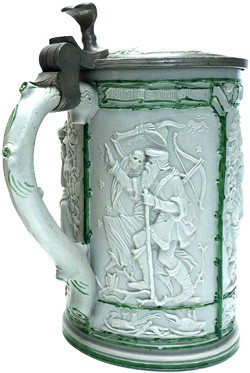
A copy of a Villeroy & Boch - Mettlach #24 (early version) as designed by Ludwig Foltz II. Hunter equipped with Crossbow, accompanied by the Grim Reaper, made by Oberpfälzer Steingutmanufaktur E. Kick in Amberg, marked with an impressed Amberg and dated circa 1860.
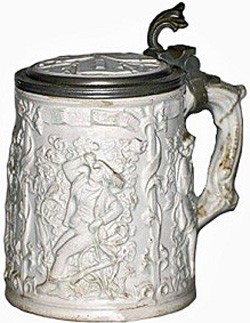
Earthenware stein, a copy of Villeroy & Boch - Mettlach #24, designed by Ludwig Foltz II, thought to be in the date range 1865 - 1875.

This mark on the above stein, is attributed to E. Kick
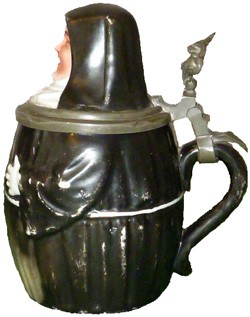
Side view of Nun stein showing "question mark" handle attributed to E. Kick.
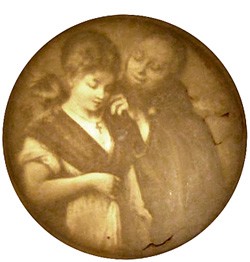
One of several lithophanes which can be seen in both Monk & Nun steins.
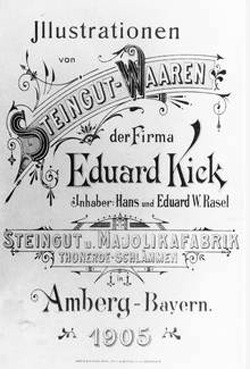
Illustration of 1905, when the firm of Eduard Kick was managed by Hans & Eduard W. Rasel, five or six years prior to the pottery factory closure.
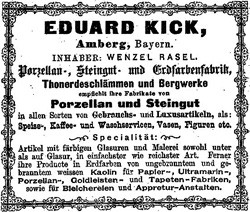
Advertisement dated 1883. N.B. This includes porcelain as part of the range, whereas the advertisement, dated 1905, at top, lists earthenware and majolica ware but no porcelain .












